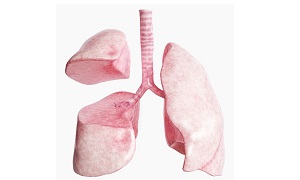Thoracotomy
The surgery for opening your chest is Thoracotomy. Your surgeon will make a cut in your chest wall between the ribs during this surgery for operating on your lungs. Your surgeon can remove a part of your lungs or your entire lungs through this cut.
The Thoracotomy procedure finds its use in treating lung cancer. In some cases, the procedure helps to treat problems with other structures of the chest like the diaphragm or the heart. Doctors also use this procedure to diagnose disease.
What to expect?
The nurse will administer general anesthesia to you before the surgery starts. It ensures that you will be sleeping and remain pain-free at the time of the surgery. There will also be an epidural (a small tube into your spine) for delivering medication for pain during the surgery. Your surgeon will first make an incision of 6 to 8 inches between both of your ribs, below your shoulder blade. After dividing the muscles, he or she will spread or remove your ribs to gain access to your lungs or any other part of the chest. If the surgery is to be done on the lung, the surgeon will deflate the affected lung with a special tube & work on it. The ventilator will keep the other lung in working condition in the meantime.
Doctors usually use this procedure with another procedure for treating lung cancer. The stage of your cancer helps to decide which type of surgery will be best for you.
Wedge resection
Wedge resection involves the removal of a wedge-shaped piece from that area of the lungs which has cancer along with some amount of healthy tissue surrounding it.
Segmentectomy
Segmentectomy is the removal of a segment of your lung.
Lobectomy
Lobectomy involves the removal of the lobe of the lung that has cancer.
Pneumonectomy
Pneumonectomy is the removal of the entire lung.
Extrapleural pneumonectomy
Extrapleural pneumonectomy is the removal of the lung, the pleura (the lining of your heart & lungs), and a part of your diaphragm.
If the extent of cancer is increasing, you might also need to remove your lymph nodes. Your surgeon will reinflate your lung after the procedure. The temporary tubes within your chest will help to drain fluid, air, and blood that collects around your lungs at the time of the surgery. The times will remain in the lungs for a few days. Next, the surgeon will repair your ribs and close the wound with sutures or staples. The surgery will last for 2 to 5 hours.
Risks
After the surgery, you might experience some pain or a burning sensation in the chest. However, your doctor will prescribe you medications to help you recover from that pain. The pain will subside after a few days or a few weeks. The possible complications associated with Thoracotomy are:
- Bleeding
- Pneumonia
- Infection
- Deep vein thrombosis (blood clot in the legs) that travels to your lungs and cause a pulmonary embolism (blockage).
- Air leak from the lungs

